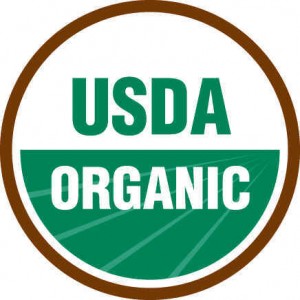08
Sep
Researchers Link Viruses, Genes and Pesticides to Bee Colony Collapse
(Beyond Pesticides, September 8, 2009) Researchers at the University of Nebraska-Lincoln believe they may have determined the first causal relationship linking colony collapse disorder (CCD) to pathogens and other environmental stresses, including pesticides. CCD is a disappearance of honey bees that has beset beekeepers killing off more than a third of commercial honey bees in the U.S. in 2006-2007. Their study, “Changes in transcript abundance relating to colony collapse disorder in honey bees,” was published September 1, 2009 in the Proceedings of the National Academy of Sciences. The team also included researchers from the University of Illinois and the U.S. Department of Agriculture.
In a nutshell, the researchers determined, by comparing the differences in gene expression in healthy and CCD colonies, the infected colonies had considerably more damage in their ribosomes. (Ribosomes function in the expression of the genetic code from nucleic acid into protein in all animal, plant and fungal cells.) The infected hives also had higher rates of picorna-like viruses, which damage the ribosome. The researchers believe the loss of ribosomal function leaves the bees susceptible to pesticides and other infections.
The honey bee genome project was launched in 2006 by University of Illinois researchers. The new study made use of the genome and a genome-based tool, the microarray, to look for differences in gene expression in the guts of healthy honey bees and in those from hives afflicted by CCD. The gut acts as a primary interface between the honey bee and its environment as a site of entry for pathogens and toxic chemicals.
Such microarray analyses normally identify only active genes — those that have been transcribed into messenger RNA in the first stage of building proteins. But researchers noticed that the microarrays were turning up large quantities of fragmented ribosomal RNA (rRNA) in the bees affected by CCD. Ribosomes are the factories in which proteins are made, but this rRNA contained adenosine-rich sequences not seen in normal ribosomes. Such “polyadenylation” is believed to be a sign of ribosome degradation. Comparisons of healthy bees and bees from hives afflicted with CCD showed that the fragments were present at a much higher frequency in the CCD bees.
When the team looked at the pathogens of healthy bees and bees from hives affected by CCD, they saw that the CCD bees suffered “more than their share” of infections with viruses that attack the ribosome, Berenbaum said. These so-called picorna-like viruses “hijack the ribosome,” she said, taking over the cellular machinery to manufacture only viral proteins. The list of picorna-like viruses that afflict honey bees is long and includes Israeli acute paralysis virus, which was once suspected of being the primary cause of CCD.
Numerous suspects have been identified in the hunt for a cause of CCD, from nutritional deficiencies to exposure to genetically modified plants tp pesticides.
“The loss of ribosomal function would explain many of the phenomena associated with CCD,” said May Berenbaum, head of the Department of Entomology. “If your ribosome is compromised, then you can’t respond to pesticides, you can’t respond to fungal infections or bacteria or inadequate nutrition because the ribosome is central to the survival of any organism. You need proteins to survive.”
The varroa mite, which is believed to have killed off a significant number of honey bees after it was accidentally introduced to the U.S. in 1986, is a carrier of picorna-like viruses, and is likely a significant contributor to the high viral pathogen load that afflicts U.S. bees. The mite may act as a tipping factor leading to ribosome breakdown, the researchers said.
All of these influences, along with the practice of carting bees around the country for pollination services, are significant stressors on the bees, a heavy burden that would be amplified by a loss of ribosomal function, Robinson said.
Research is ongoing as to the cause of the CCD phenomenon, but pesticides, especially neonictinoids such as imidacloprid, have been implicated. CCD can be especially devastating since honeybees are essential pollinators of crops that constitute over one third of the U.S. food supply or $15 billion worth of food. For more information on pollinators and CCD, read our factsheet: Pollinators and Pesticides: Escalating crisis demands action.
Beyond Pesticides believes that pesticides are likely to be a part of the CCD equation and a precautionary approach must be taken. Solutions to the loss of bees and human productivity are clearly within our reach if we engage our communities and governmental bodies. We know how to live in harmony with the ecosystem through the adoption of sustainable practices that simply do not allow toxic pesticide use. Because our survival depends on healthy pollinators, we must do everything in our power to solve this problem.
Take Action: Email EPA Administrator Lisa Jackson and tell EPA to take a precautionary approach regarding pesticides that kill or have sublethal impacts on bees and other pollinators.






















